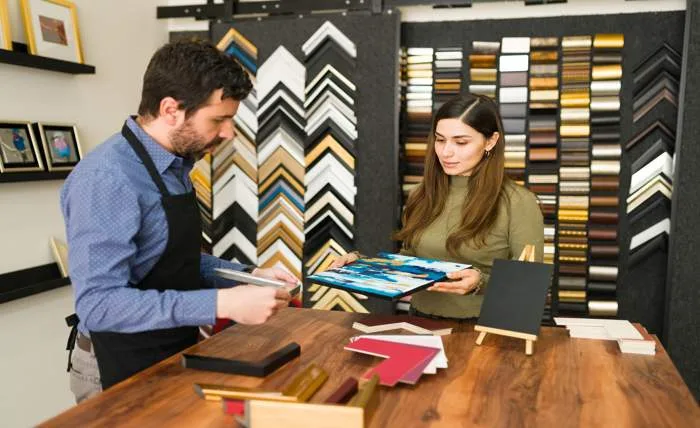Wallpaper can completely change the feel of a room. Whether you’re decorating a rental or refreshing a tired space, the right pattern or texture adds personality without much effort. And thanks to modern materials, you no longer need to commit long-term. For example, many people use removable wallpaper for renters. It helps them add style without damaging the walls or breaking any rental rules.
It’s easier than ever to find great options. The California wallpaper store has many renter-friendly designs. You can find styles for different rooms, tastes, and skill levels.
What to consider before you buy
Before jumping into color swatches and prints, think about where you’ll install the wallpaper and what role you want it to play in the space.
Ask yourself:
- Is this a main wall or an accent?
- Does the room get a lot of moisture or heat?
- Are the walls smooth and clean?
- Is this a permanent home or a short-term rental?
Your answers will help you decide on material, type, and durability.
Types of wallpaper to know
Not all wallpaper is created equal. Each kind has pros and cons. Here are the most common types:
- Peel and stick. Great for renters or those who like to change things up. Easy to apply, remove, and reposition. Works well on smooth surfaces.
- Traditional wallpaper (paste required). Classic choice for a long-term result. Comes in paper, vinyl, or fabric-backed versions. Needs more prep and tools.
- Pre-pasted wallpaper. Has glue activated by water. Easier than paste-on, but still more work than peel-and-stick.
Materials that matter
Choosing the right material makes a difference in how long your wallpaper lasts and how good it looks over time.
Popular materials:
- Vinyl – Durable and moisture-resistant. Good for kitchens, bathrooms, and kids’ rooms.
- Non-woven – Breathable and easier to remove. Often used in modern designs.
- Grasscloth or fabric – Adds texture and warmth but needs careful handling.
If you’re in a rental or just want a hassle-free project, stick with removable vinyl or non-woven options.
Where to use wallpaper
Wallpaper doesn’t have to cover an entire room to make a statement. In fact, sometimes less is more.
Great places for wallpaper:
- Behind the bed or sofa as a focal point
- Inside bookcases or cabinets for contrast
- One bold accent wall in a small room
- Home office walls for creative energy
Less ideal areas:
- Directly behind stovetops
- Inside shower enclosures
- Uneven, cracked, or peeling surfaces
Just prep your wall and apply the wallpaper slowly. Even first-timers can get good results.
Design tips that work
Choosing wallpaper isn’t just about what looks good in the store. You want something that works with your furniture, lighting, and overall style.
Helpful tips:
- Go bold in small spaces—like a powder room or hallway
- Use light colors to make a room feel bigger
- Try vertical stripes to raise low ceilings
- Mix textures, but don’t overdo it
Also, test a sample before ordering rolls. Light and space change how colors look.
Easy mistakes to avoid
Even a small wallpaper project can go wrong if you rush or skip steps. Keep these things in mind:
Avoid these:
- Skipping wall prep (dust or uneven paint can ruin adhesion)
- Misaligning the pattern on large prints
- Not ordering extra (always get at least 10% more)
- Using the wrong type for the surface
Take your time. Measure carefully. And read the product info fully.
Final thoughts
Wallpaper is one of the easiest ways to add charm, color, and personality to any room. From bold patterns to subtle textures, it gives you more control than paint alone. And if you choose removable wallpaper for renters, you won’t be stuck with it forever.
Stores like California Wallpaper make it easy to explore different types, compare samples, and get inspired. Whether you’re decorating a living room, a bedroom, or just a quiet corner, there’s a wallpaper out there that fits your style—and your walls.



